Concepts that Children Learn Through Play 12 videos
We invite you to browse this sample playlist of 12 video clips selected from more than 350 clips in our Video Streaming Service. In this sample playlist each video reveals something children learn through play. Once you subscribe to our Video Streaming Service, you can create your own playlists and comments. You then email a unique url of your playlist to students or staff who can view those video clips online at no extra charge. To subscribe to the Video Streaming Service click here.
-
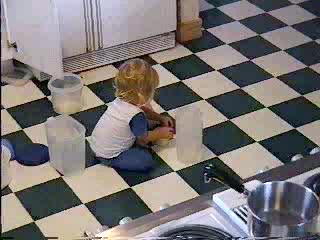
Kaylee in the Kitchen
Kaylee is sitting on the kitchen floor where she has been exploring a set of plastic containers and lids for 45 minutes. She tries to fit a blue lid on top of a yellow measuring cup. Kaylee knows the blue object is a lid and assumes it should sit over…
Subjects: containers
Ages: twos
Tags: child-object pretense empty-full thinkprint environment
-
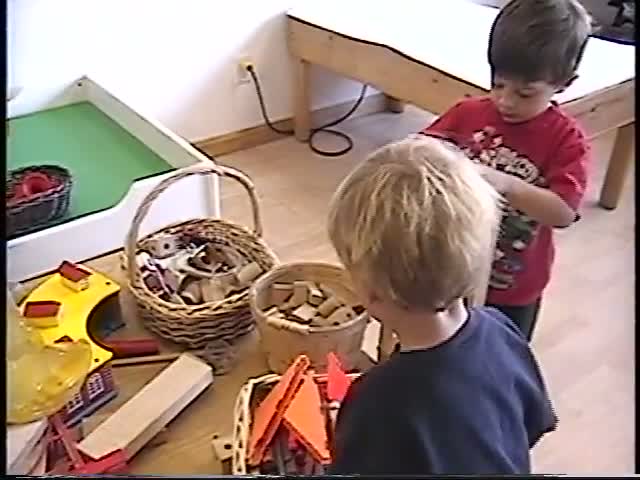
Grandma's Elevator
Andrew and Edward have different orientations to block play. Edward wants to arrange the blocks as props to support his story. Andrew wants to make spatial motifs, a triangle on every cylinder. Yet the two boys find a way to play together fluidly. This fluidity is facilitated by the symbolic…
Subjects: blocks
Ages: threes
Tags: pretense co-construction symbolization child-child closed captions
-
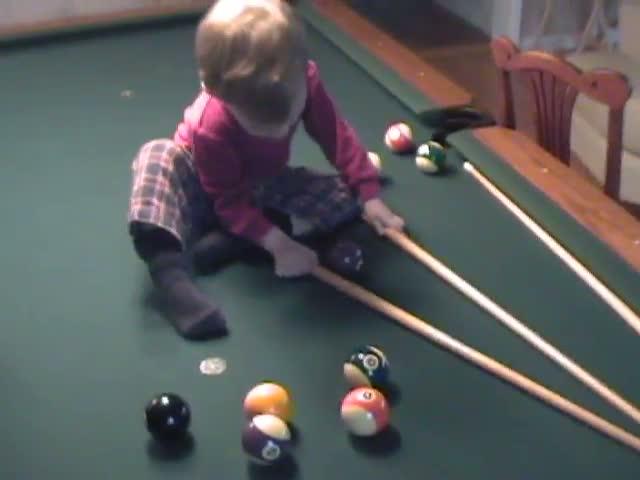
Ben Shoots Pool
Two-year-old Ben and his father invent challenging ways to get a billiard ball into the pool table pocket. Ben uses the cue sticks to channel the ball into the pocket. Ben’s father offers hints now and then. Decide if you agree with the ways that Ben’s uncle makes the game…
Subjects: balls
Ages: twos
Tags: child-parent cause-effect inclines direction closed captions
-
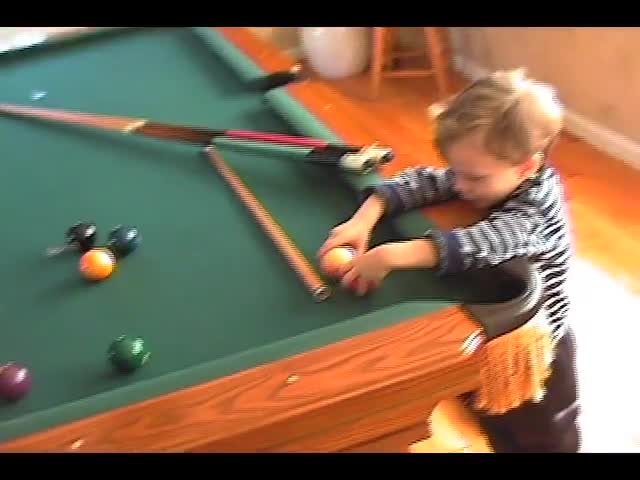
Ben Shoots Pool II
Ben returns to the pool table. By using the cue sticks to build a ramp, Ben creates an unconventional way to roll the balls. Uncle George and Ben consider how to aim so that the balls roll into the pocket. Ben asks why the balls all go to the same…
Subjects: balls
Ages: threes
Tags: closed captions parent-child cause-effect angles aiming inclines
-
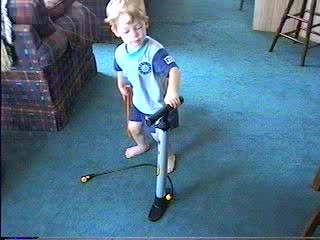
Tyler Uses a Chainsaw
Tyler lowers the bicycle pump to show how the cut goes deeper into the wood as he saws. He pulls the cord on the chainsaw repeatedly and on the fourth pull makes a buzzing sound to signal the motor has turned on. Tyler convincingly represents his understanding that the motor…
Subjects: props
Ages: threes
Tags: child-object pretense function gestures
-
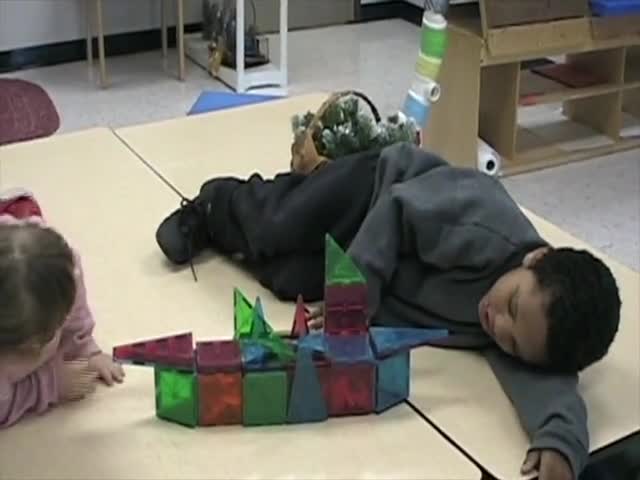
It Helps to Laugh
Chaislyn and Chris have a routine: Chris does something to move the play in a particular direction and Chaislyn follows his lead. Chaislyn likes to create obstacles to assert her presence in the game. These additions receive stern admonishments from Chris, causing them both to laugh. Their laughter signals the…
Subjects: blocks
Ages: fours
Tags: child-child maintaining play friendship special education closed captions
-
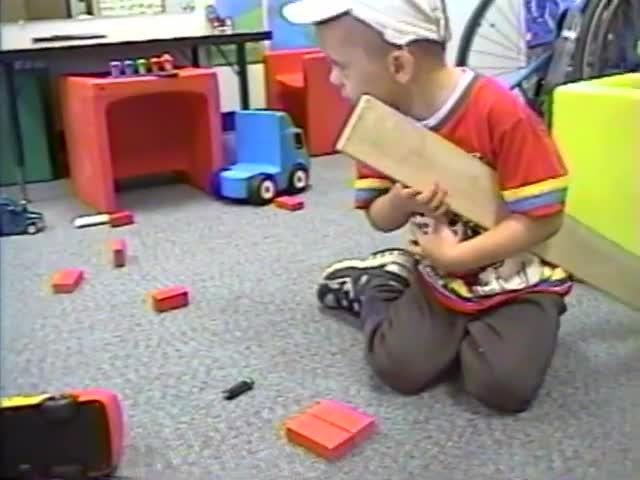
Teddy Builds a Ramp
Teddy’s sense of symmetrical design both helps and hinders him while building a functional ramp. He invents a way to keep track of ‘good blocks’ and ‘bad blocks’ by placing them in different locations. Teddy overcomes his habit of aligning blocks so that he can make a working ramp by…
Subjects: blocks
Ages: fours
Tags: closed captions attention-memory child-object spatial relations invention special education
-
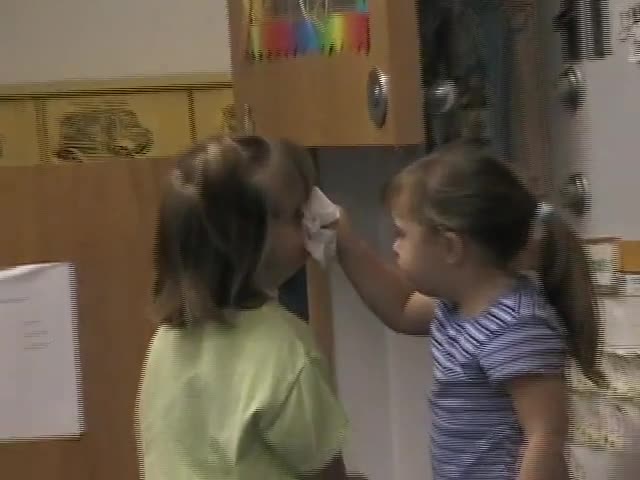
How Two Friends Talk Through Hugs and Tugs
Chaislyn finishes reading a book to Madison and then invites her friend to take a turn. Madison does not immediately respond so Chaislyn gradually uses several subtle strategies to entice her. Chaislyn first taps Madison’s arm gently. Then, while softly saying her name, “Maddie,” Chaislyn grasps and gently shakes Madison’s…
Subjects: body
Ages: fours
Tags: child-child communication friendship special education reading closed captions
-
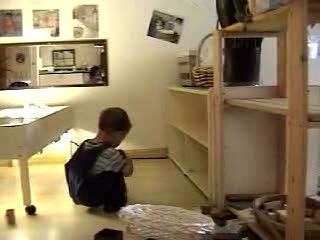
Bottomless Containers
Tucker discovers that a tube, with a small hole on one end and a large hole on the other, offers some surprises. Sometimes when he lifts the container, the small blocks he previously placed in the container remain on the floor; sometimes they do not. The results depend on the…
Subjects: containers
Ages: ones
Tags: child-child spatial relations empty-full thinkprint
-
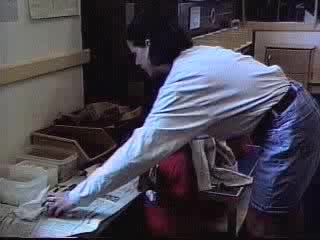
Not Just Play!
Please note: There is no sound track on this video. Kieran, a three-year-old boy, glues do-dads on a two-by-four. As he works and thinks about the sequence of his actions, Kieran figures out how to eliminate steps by putting extra glue on his applicator and by grabbing two objects at…
Subjects: glue
Ages: threes
Tags: reflective thinking child-object spatial relations sequence efficiency
-
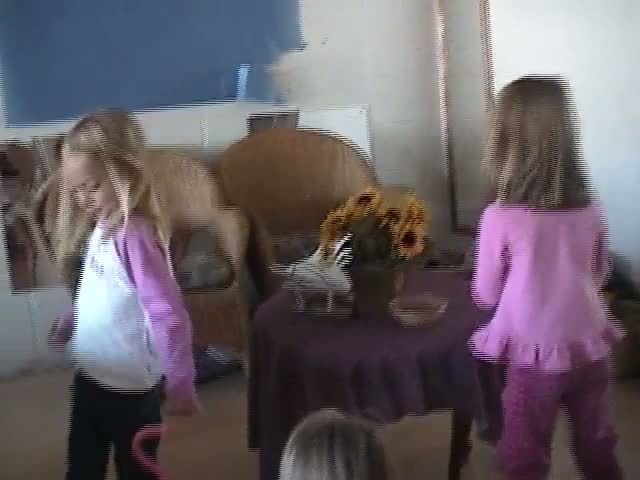
Sick Baby
Emma, Brenna, and Julia are caring for a baby with a ‘boo-boo’. Brenna animates the Mom (doll) who feeds the baby. Julia talks on the telephone. She says, “Hi. (Pause) Hello. Would you pick up our baby? It’s sick. (Pause) Okay, bye.” Julia cleverly inserts pauses into her pretend telephone…
Subjects: dolls
Ages: fours
Tags: child-child pretense illness rules closed captions
-
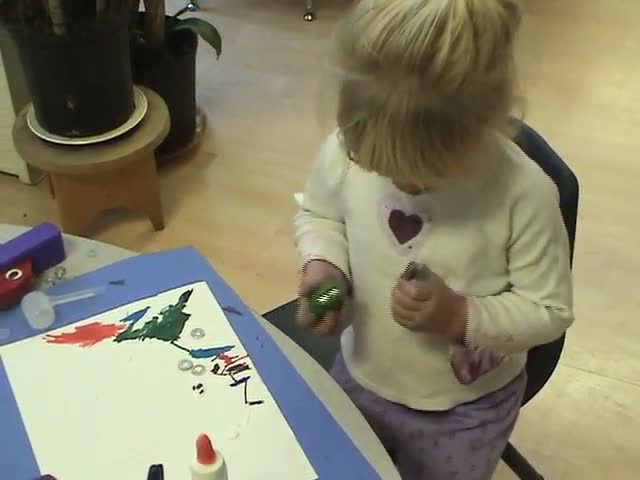
Pencil Sharpeners
Mary creates wood shavings for her collage by twisting the pencil sharpener around the pencil. But what marks the quantity that she is creating? She looks at both the container and the pencil tip. She appears to understand the logic: adding shavings here means reducing wood there. Mary shifts her…
Subjects: simple machine
Ages: threes
Tags: child-teacher function empty-full exploration